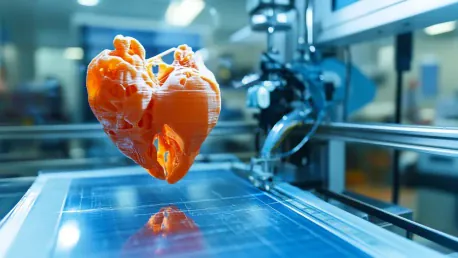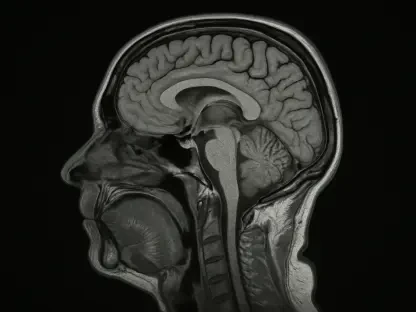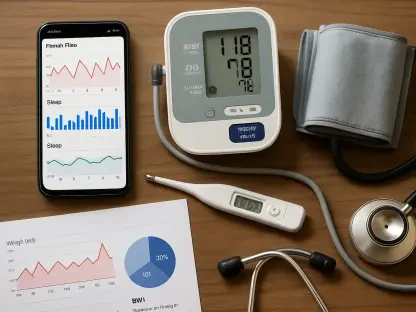3D printing technology, also known as additive manufacturing, is changing the face of healthcare, especially in the realm of medical device manufacturing. This cutting-edge technology boasts significant advancements and potential for custom-made medical solutions, setting the stage for improved patient care and outcomes. From creating bespoke prosthetics to developing intricate surgical tools, the possibilities presented by 3D printing are vast and continuously evolving. As the medical field races towards a future defined by technology and innovation, 3D printing stands out as a pivotal tool in this transformation.
The Growing 3D Printing Market in Healthcare
The medical 3D printing market is witnessing rapid growth, driven by groundbreaking innovation and substantial investments from medical device companies. Valued at $2 billion in 2022, the market is projected to double by 2026, reaching a staggering $4 billion with a compound annual growth rate (CAGR) of 21%. This remarkable expansion underscores the increasing recognition of 3D printing’s potential to revolutionize medical device production, providing a tangible pathway toward the future of personalized healthcare.
Medical 3D printing’s ability to create customized prosthetics, implants, and surgical tools is a major factor behind its market growth. Customization ensures that medical devices align perfectly with individual patient needs, enhancing comfort, efficacy, and overall patient outcomes. Additionally, the advent of bioprinting—a technology still in its nascent stages—presents promising prospects for fabricating custom tissues and organs for transplantation. This exciting frontier further contributes to the sector’s burgeoning potential by addressing critical medical challenges and paving the way for future advancements.
Stratasys Direct: A Pioneer in Medical 3D Printing
A key player in this transformative landscape is Stratasys Direct, a leading supplier to the medical device industry that has significantly advanced its 3D printing capabilities. The company’s Tucson, Arizona facility recently achieved ISO 13485 certification, an internationally recognized standard for quality management in medical device manufacturing. This milestone underscores Stratasys Direct’s commitment to quality and positions it as a major force driving the adoption of additive manufacturing in healthcare.
Stratasys Direct is looking to extend this certification to its Texas and Minnesota facilities to address the surging demand for custom medical devices. This dedication to stringent quality standards illustrates the critical role of certification in legitimizing the use of 3D printing for creating top-notch medical products. By adhering to rigorous quality benchmarks, Stratasys Direct ensures that its innovations meet the highest standards, further cementing its reputation as a pioneer in the field of medical 3D printing.
The Advantages of Additive Manufacturing
Amy Vaughn, a manufacturing engineer at Stratasys Direct, emphasizes the numerous advantages of additive manufacturing over traditional methods like injection molding. Vaughn highlights the high costs and design constraints associated with conventional processes, noting specific instances where requests for custom medical devices were thwarted by prohibitive expenses despite their clinical importance. Her insights shed light on the limitations of traditional manufacturing and underscore the transformative impact of 3D printing.
3D printing offers unparalleled flexibility, making it ideal for producing bespoke medical components tailored to individual patient needs. Unlike traditional manufacturing, which struggles with variability in patient requirements, additive manufacturing excels in delivering customized solutions. This flexibility not only enhances patient outcomes but also reduces production times and costs for small-batch custom devices. Vaughn emphasizes that while industries like automotive and aerospace have widely adopted 3D printing, the medical device sector is still discovering its vast potential.
The Need for Greater Awareness in MedTech
Despite its advantages, there is a significant lack of widespread awareness among MedTech professionals regarding 3D printing’s full capabilities. Vaughn points out that many industry experts are not fully informed about the technology’s potential to produce intricate prints, complex colors, and geometries, or its ability to print rubber through digital light processing (DLP). This knowledge gap presents a substantial challenge, impeding the industry’s adoption of 3D printing despite its substantial benefits.
Increasing awareness and understanding of the technology among MedTech professionals is essential to unlocking its full potential and driving its integration into mainstream medical device production. Education and training programs, industry seminars, and collaboration between technology providers and medical professionals could help bridge this gap. By fostering a deeper understanding of 3D printing’s capabilities, the industry can more effectively harness its advantages to improve patient care and advance medical technology.
Overcoming Challenges in Production Speed and Scalability
While 3D printing holds great promise, it faces limitations in terms of production speed and scalability. Vaughn acknowledges that current 3D printing processes lag behind conventional methods like injection molding in terms of efficiency, especially for large-scale production runs. Injection molding continues to hold an advantage with its significant speed and cost-efficiency once the initial investments in molds and production infrastructure are recouped.
Nevertheless, additive manufacturing excels in small-batch production, where it proves to be more cost-effective and allows for iterative, customized work. Vaughn remains optimistic that, with adequate investment in automation and R&D, 3D printing could eventually match the efficiency of injection molding, particularly for large batches. The development of automated systems and advanced materials will be pivotal in overcoming current production limitations and realizing the full potential of 3D printing technology.
The Path Forward for 3D Printing in Medical Devices
3D printing technology, commonly referred to as additive manufacturing, is revolutionizing healthcare, especially in the production of medical devices. This state-of-the-art technology brings significant advancements and offers immense potential for creating tailored medical solutions, paving the way for enhanced patient care and better outcomes. The applications of 3D printing in healthcare are extensive, ranging from the creation of personalized prosthetics to the development of complex surgical instruments. This innovative approach allows for the customization of medical devices that were previously impossible with traditional manufacturing methods. As the medical industry advances toward a technologically driven future, 3D printing emerges as a key player in transforming patient care. The continuous evolution of this technology promises even more groundbreaking developments, ensuring that 3D printing remains integral in the journey toward advanced and personalized medical solutions.









